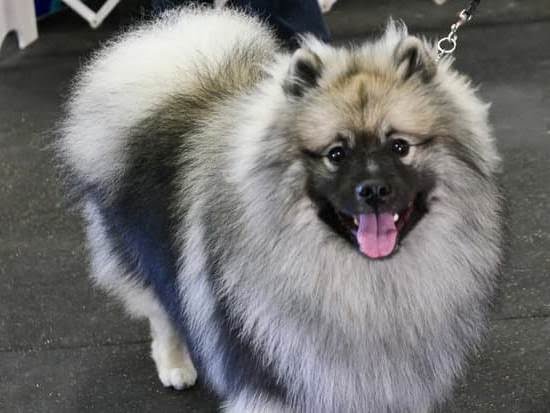Does your dog seem to lack the ability to bark or rarely makes any vocalizations? In this article, we will explore how to train a quiet dog to speak. Understanding your quiet dog’s behavior is the first step towards helping them find their voice. By identifying potential reasons for their silence and assessing their vocal capabilities, you can develop strategies to encourage them to vocalize more.
Some dogs are naturally quiet, while others may have underlying reasons for their lack of vocalization. It’s important to observe and understand your dog’s behavior before implementing any training methods. By introducing verbal cues and commands, using positive reinforcement, and incorporating play and socialization, you can build your dog’s confidence and encourage them to speak.
If you’re struggling with training your quiet dog to speak, seeking professional help may be necessary. Celebrating small progress and maintaining consistency in training is key in helping your dog feel comfortable speaking. Creating a supportive environment for your quiet dog is essential in cultivating their ability to vocalize more freely.
Identifying Potential Reasons for Your Dog’s Silence
Understanding why your dog is quiet is the first step in training them to speak. There are several potential reasons for a dog’s silence, including their personality, breed tendencies, past experiences, and physical health. Some dogs are naturally more reserved and less vocal, while others may be silent due to fear, anxiety, or discomfort. It’s important to observe your dog’s behavior and consider any possible underlying factors that may be contributing to their quiet nature.
One common reason for a dog’s silence is shyness or insecurity. Dogs who lack confidence may be hesitant to vocalize or express themselves.
If you suspect that your dog’s silence is related to their confidence level, it’s essential to incorporate play and socialization into their routine. Engaging in interactive games, providing opportunities for positive interactions with other dogs and people, as well as exposing them to new environments can help build your dog’s self-assurance and encourage them to find their voice.
Another potential reason for a quiet dog is related to their physical health. Pain or discomfort from an underlying medical condition can lead to changes in a dog’s behavior, including reduced vocalization.
If you suspect that your dog’s silence may be linked to physical discomfort, it’s crucial to consult with a veterinarian to rule out any health issues. Addressing any medical concerns will not only improve your dog’s overall well-being but also create a more conducive environment for them to feel comfortable expressing themselves vocally.
When identifying potential reasons for your dog’s silence, it’s important to approach the situation with patience and understanding. Every dog is unique, and there may be a combination of factors influencing their behavior. By taking the time to assess your dog’s individual needs and considering all possible reasons for their silence, you can develop an effective training plan tailored specifically to your quiet dog’s needs on howt train a quiet dpg o speak.
Assessing Your Dog’s Vocal Capabilities
When it comes to training a quiet dog to speak, it’s important to first assess your dog’s vocal capabilities. Not all dogs are naturally vocal, and some breeds tend to be quieter than others. Before you begin training, take the time to observe your dog’s behavior and determine if they are physically capable of barking or making any other vocalizations.
To assess your dog’s vocal capabilities, consider the following:
- Observe your dog in various situations to see if they make any sounds such as whining, growling, or whimpering.
- Pay attention to any physical cues such as throat clearing or attempts at vocalization.
- Consult with a veterinarian to rule out any medical conditions that may be affecting your dog’s ability to vocalize.
Understanding your dog’s natural tendencies and limitations when it comes to vocalization will help you develop a realistic training plan.
Once you have assessed your dog’s vocal capabilities, you can then move on to introducing verbal cues and commands. Remember that every dog is unique, so be patient and consistent in your approach. With time and effort, even the quietest of dogs can learn to speak on command.
Introducing Verbal Cues and Commands
When it comes to training a quiet dog to speak, one of the first steps is introducing verbal cues and commands. This will help your dog understand when you want them to vocalize and what specific behavior is expected from them. Here are some tips on how to effectively introduce verbal cues and commands to your quiet dog:
1. Start with basic commands: Begin by teaching your dog basic commands such as “sit” or “stay” using verbal cues. Once they have mastered these commands, you can start introducing more advanced vocalizations.
2. Use consistent verbal cues: Choose a specific word or sound that you will use consistently when encouraging your dog to speak. This could be a simple “speak” or “talk” command that your dog will learn to associate with vocalization.
3. Pair verbal cues with actions: When introducing the verbal cues, pair them with actions that encourage vocalization such as holding a treat in front of your dog’s nose or making an excited gesture.
Remember, patience is key when training a quiet dog to speak. It may take some time for your dog to understand and respond to the verbal cues, so make sure to be consistent and provide positive reinforcement whenever they make an attempt to vocalize.
Overall, introducing verbal cues and commands is an essential step in training a quiet dog to speak. By using consistent cues and pairing them with positive actions, you can help encourage your dog to find their voice in a comfortable and supportive environment.
Remember that every dog is unique, so it’s important to tailor your training methods based on your individual pet’s needs and abilities.
Using Positive Reinforcement and Rewards to Encourage Vocalization
Once you have introduced verbal cues and commands to your quiet dog, it is important to use positive reinforcement and rewards to encourage vocalization. Positive reinforcement involves rewarding your dog when they display the desired behavior, in this case, vocalization.
When your dog responds to the verbal cues or commands with a bark or a howl, immediately praise them and offer them a treat or their favorite toy. This will help your dog associate their vocalization with positive outcomes, making them more likely to continue doing so.
It is crucial to be consistent with the use of rewards and praise. Every time your quiet dog makes an attempt at speaking, make sure to acknowledge and reward them. Over time, they will learn that vocalization leads to positive consequences, and they will be more willing to engage in this behavior.
In addition to treats and praise, you can also use clicker training as a form of positive reinforcement for encouraging your quiet dog to speak. A clicker can be used as a marker for the exact moment your dog produces a vocalization in response to your cue or command. This precise timing helps reinforce the desired behavior effectively.
Implementing these strategies for using positive reinforcement and rewards can significantly contribute to training your quiet dog to speak. It is important to remember that patience and consistency are key when working with any type of training for your canine companion.
| Positive Reinforcement Technique | Effectiveness |
|---|---|
| Treats & Praise | Encourages vocalization by associating it with positive outcomes |
| Clicker Training | Precisely marks the desired behavior for effective reinforcement |
Incorporating Play and Socialization to Build Confidence
For many quiet dogs, their lack of vocalization may be related to shyness or a lack of confidence. Incorporating play and socialization into your dog’s routine can help build their confidence and encourage them to speak more freely.
Understanding the Importance of Play and Socialization
Play and socialization are essential for a dog’s mental and emotional well-being. It helps them develop social skills, build confidence, and reduce anxiety. For quiet dogs, it can also provide an opportunity for them to open up and express themselves more freely.
Engaging in Interactive Playtime
Interactive playtime with your dog can help them become more comfortable with vocalizing. Engage in games that encourage barking or making noise, such as tug-of-war or fetch. As your dog becomes more comfortable with these activities, they may become more inclined to vocalize during play.
Exposing Your Dog to New Environments and People
Introducing your quiet dog to new environments and people can also help build their confidence. Exposing them to different sounds, sights, and experiences can broaden their comfort zone and encourage them to speak out more. Additionally, positive interactions with other dogs and people can help boost their self-assurance.
Incorporating play and socialization into your quiet dog’s routine can have positive effects on their confidence levels and willingness to vocalize. By creating a supportive environment through engaging activities and exposure to new experiences, you can help your quiet dog feel more at ease expressing themselves vocally.
Seeking Professional Help if Necessary
If you’ve tried all the tips and tricks but your quiet dog still refuses to speak, it might be time to seek professional help. A professional dog trainer or animal behaviorist can provide valuable insight into your dog’s behavior and offer guidance on how to train a quiet dog to speak. They can conduct an assessment of your dog’s overall health and temperament to rule out any underlying medical issues that could be causing the silence.
A professional trainer can also customize a training program tailored to your specific dog’s needs and personality. They may use specialized techniques and tools to encourage vocalization in your dog, such as clicker training or desensitization exercises. Additionally, they can teach you how to read your dog’s body language and understand their communication signals, which can be essential in encouraging them to speak.
Remember that seeking professional help doesn’t mean you’ve failed as a pet parent. It simply shows your commitment to helping your quiet dog overcome their barriers and live a fulfilling life as a vocal companion. With the right guidance and support, there’s a good chance that even the most reserved dogs can learn how to express themselves through barks, whines, or other vocalizations.
| Professional Help | Vocalization Training |
|---|---|
| Assessment of overall health and temperament | Specialized techniques like clicker training |
| Customized training program tailored to the dog’s needs | Teaching pet owners to read their dogs’ body language |
| Addressing underlying medical issues | Encouraging dogs to express themselves through various vocalizations |
Celebrating Small Progress and Maintaining Consistency in Training
Once you have started training your quiet dog to speak, it is important to celebrate small progress and maintain consistency in your training efforts.
Recognizing Small Victories
When working with a quiet dog, even the smallest vocalization should be celebrated. Whether it’s a soft whimper or a slight bark, acknowledging and rewarding any attempt at vocalization will encourage your dog to continue trying. This positive reinforcement will help them understand that speaking is a desirable behavior.
Consistency Is Key
Consistency is crucial when training a quiet dog to speak. Stick to a regular training schedule and repeat the verbal cues and commands consistently. By maintaining a predictable routine, your dog will learn what is expected of them and feel more confident in their ability to vocalize.
Persistence Pays Off
Training a quiet dog to speak requires patience and perseverance. It may take time for your dog to become comfortable with using their voice, so it’s essential not to give up. Keep practicing the verbal cues, providing encouragement, and offering rewards for any vocalization attempts.
By celebrating small victories and remaining consistent in your training efforts, you can help your quiet dog build confidence in speaking and ultimately achieve success in learning how to vocalize on command.
Creating a Supportive Environment for Your Quiet Dog to Feel Comfortable Speaking
In conclusion, training a quiet dog to speak requires patience, understanding, and consistent effort. By gaining insight into your dog’s behavior and the potential reasons for their silence, you can better tailor your training approach. It is important to assess your dog’s vocal capabilities and gradually introduce verbal cues and commands while using positive reinforcement and rewards to encourage vocalization.
In addition to training techniques, it is crucial to incorporate play and socialization activities to build your dog’s confidence and create a supportive environment where they feel comfortable speaking. Celebrating small progress along the way and maintaining consistency in training will also contribute to the success of this endeavor.
Lastly, if you find that your efforts are not yielding results or if you encounter any challenges in the process, seeking professional help from a dog trainer or behaviorist can provide valuable guidance. Remember that every dog is unique, so it’s essential to be patient and understanding throughout the training process. With time and persistence, your quiet dog can be encouraged to speak and communicate more effectively.
Frequently Asked Questions
How Do You Teach a Quiet Dog to Talk?
Teaching a quiet dog to talk can be done through positive reinforcement and patience. Start by rewarding any vocalization, even small ones, with treats and praise. Encourage them to make noise during playtime and gradually build up their confidence in using their voice.
How Do You Discipline a Quiet Dog?
Discipline for a quiet dog should focus on redirection and positive reinforcement rather than punishment. If the dog is displaying undesired behavior, redirect their attention to something else and reward the desired behavior instead.
How Do I Train My Dog to Be Less Vocal?
Training a dog to be less vocal involves understanding the root cause of their excessive barking or vocalization. Address any underlying anxiety or boredom issues by providing mental and physical stimulation. Additionally, use positive reinforcement to encourage quiet behavior and reward moments of silence.

Welcome to the blog! I am a professional dog trainer and have been working with dogs for many years. In this blog, I will be discussing various topics related to dog training, including tips, tricks, and advice. I hope you find this information helpful and informative. Thanks for reading!





